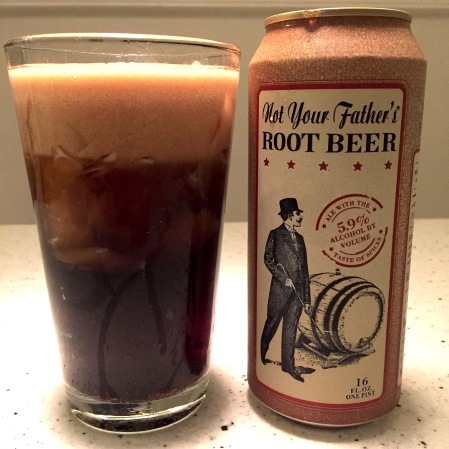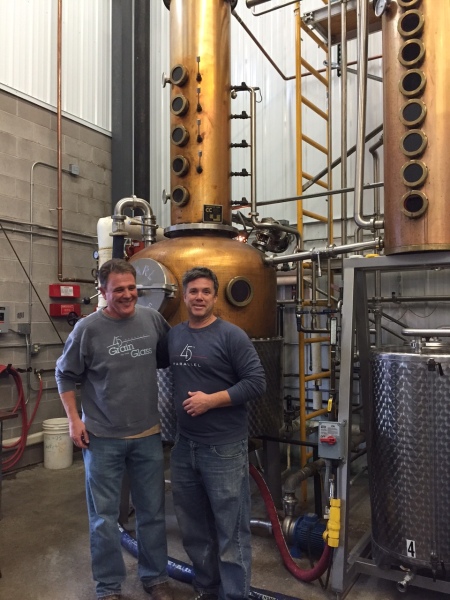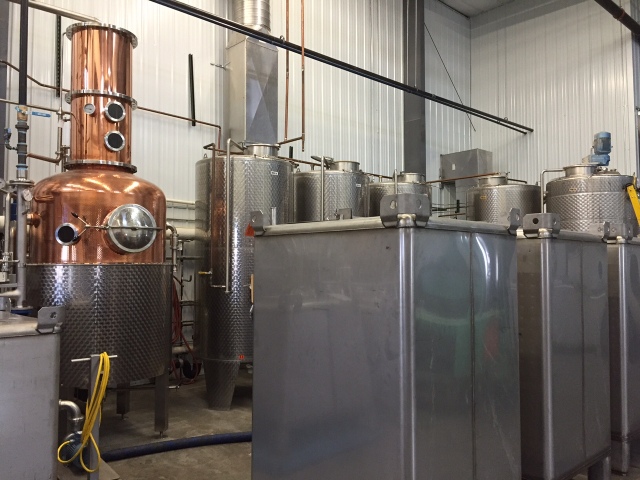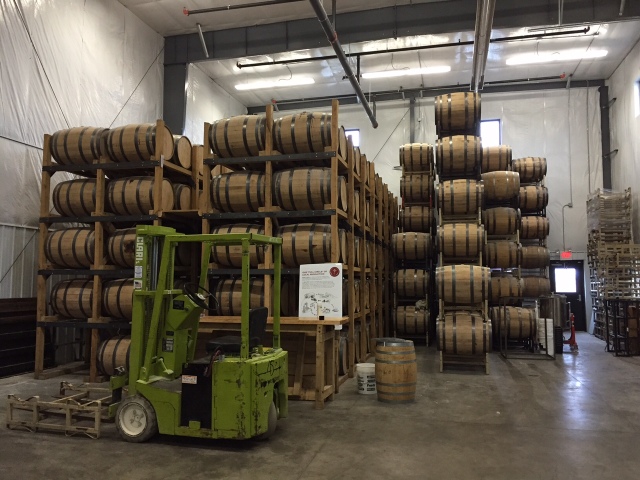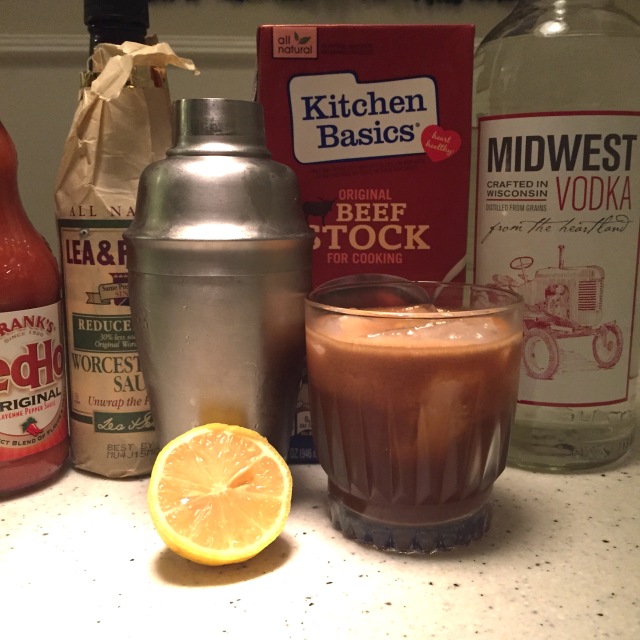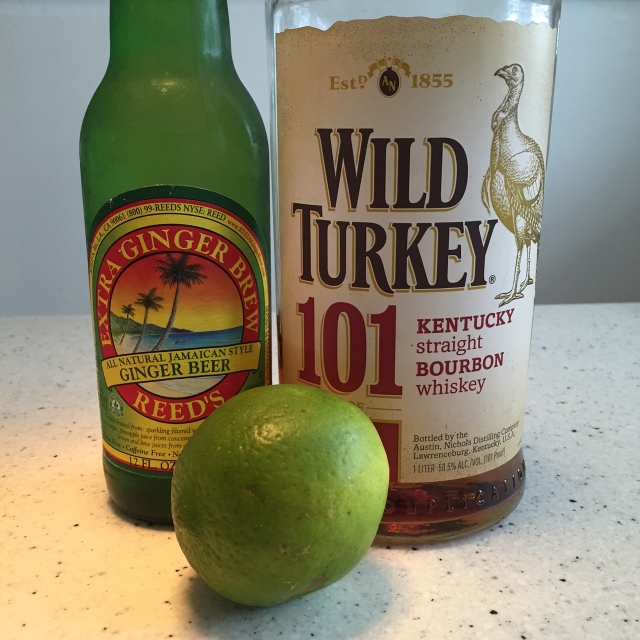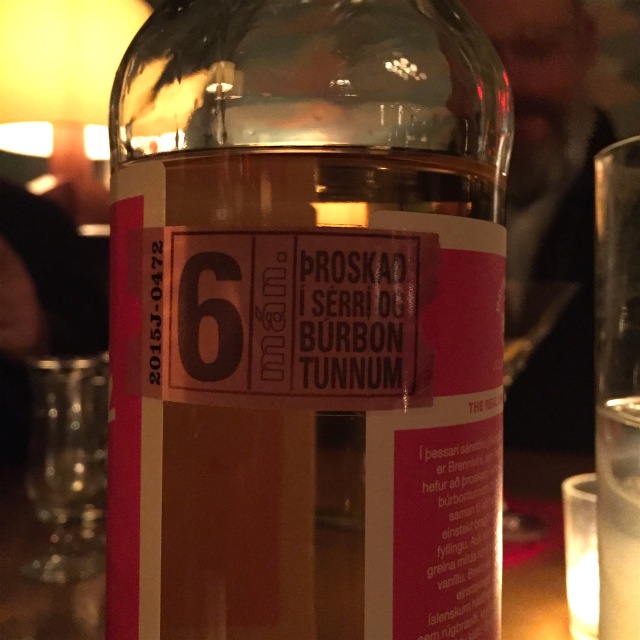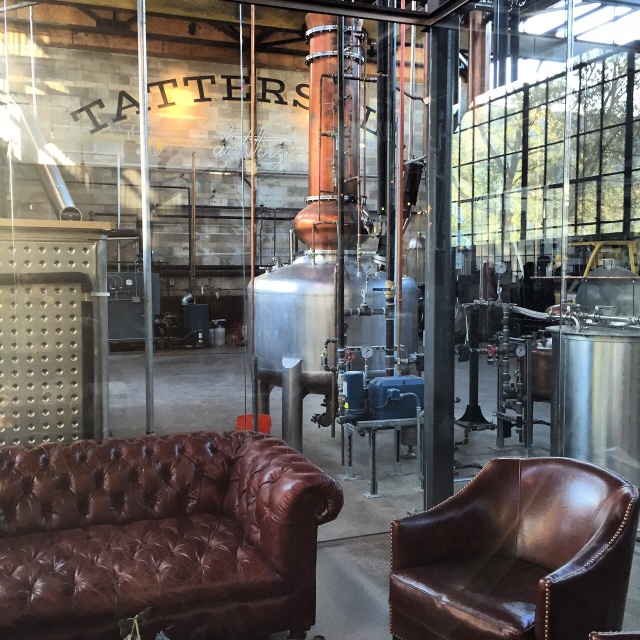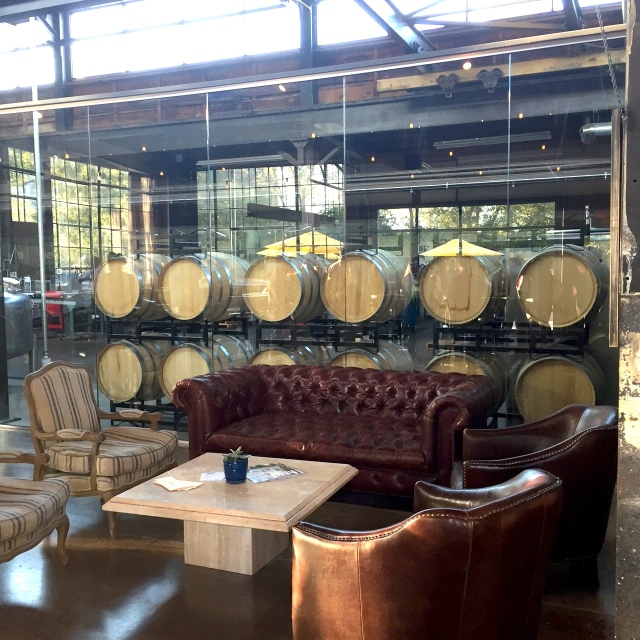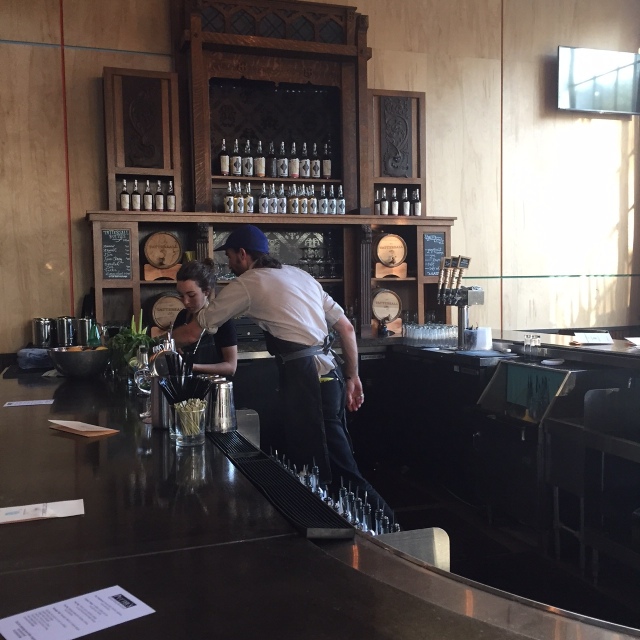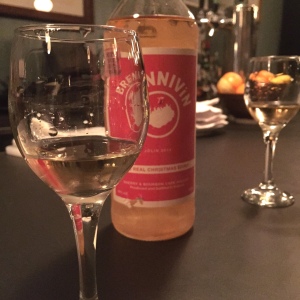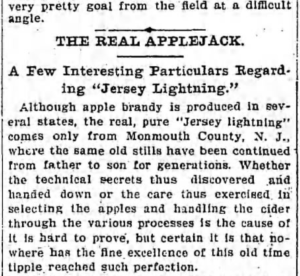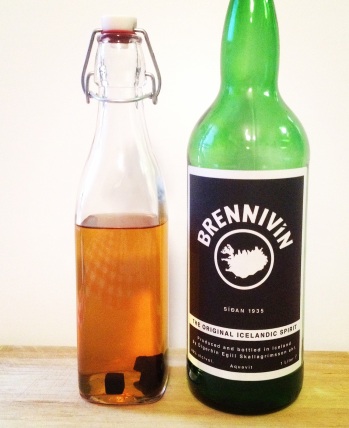As the weather in new York gets hot and humid, the fragrances that have been my mainstays for the cooler months—mostly Eau d’Italie’s Sienne l’Hiver and Bois d’Ombrie—don’t seem as appropriate. I’ve tried some of my lighter colognes, like D.R. Harris’s traditional citrus and neroli Arlington Cologne, but it’s sort of one-dimensional. I was looking for something different.
When Jeffrey Dame of the niche fragrance distributor Hypoluxe contacted me about Andy Tauer’s Cologne du Maghreb, I was excited. It promised the fleeting citrus lightness of an old school cologne with depth and spice.
 Cologne du Maghreb ($85 for 50ml) is a combination of a light traditional European cologne, full of citrus and neroli, and a spicy Middle Eastern-style fragrance. It comes on bright and fresh with a hint of cedar that’s pleasantly cinnamony. Most of the citrus fades within an hour but the cedar lingers close to the skin. When I got my 1.5ml sample in the mail, I forgot this was a true cologne and I dabbed it nervously on my skin, hoping I’d like wearing it as much as I did smelling it on a tester strip. That’s not the way. Spray with abandon, directly and from close range. You’ll be rewarded with a refreshing and complex blast of citrus.
Cologne du Maghreb ($85 for 50ml) is a combination of a light traditional European cologne, full of citrus and neroli, and a spicy Middle Eastern-style fragrance. It comes on bright and fresh with a hint of cedar that’s pleasantly cinnamony. Most of the citrus fades within an hour but the cedar lingers close to the skin. When I got my 1.5ml sample in the mail, I forgot this was a true cologne and I dabbed it nervously on my skin, hoping I’d like wearing it as much as I did smelling it on a tester strip. That’s not the way. Spray with abandon, directly and from close range. You’ll be rewarded with a refreshing and complex blast of citrus.
Zurich, Switzerland-based Andy Tauer, a self-taught perfumer, has a cult following among niche fragrance fans and bloggers. His business started in 2005 and has grown to the point where he does it full time. He’s got a PhD in molecular biology but he says it hasn’t actually been useful in his perfumery (“Except from time to time, when dealing with suppliers: Depending on the country and the context a ‘Dr. sc. nat.’ helps.”). One of his very first fragrances, l’Air du Désert Marocain, remains his best seller; it was given a five-star review by Tania Sanchez in Perfumes: The A to Z Guide. That glowing endorsement “helped kickstart my venture,” Tauer admits. I’m partial to his third fragrance, Lonestar Memories, a smoky, leathery scent packed with birchtar.
Tauer first released Cologne du Maghreb in 2011 as a limited edition for the holidays. He’s brought it back for this summer as the first of what he hopes will be an annual series of colognes. I asked him some questions about Cologne du Maghreb via e-mail.
In America, people tend to use the term cologne to mean a men’s fragrance, not a lower concentration (2-5%) of perfume oil. What does cologne mean to you, in the European sense?
From a (middle) European perspective, a cologne is a refreshing citrus-based scent that was invented some good 250 years ago, relying basically on a contrast between fresh citrus notes and a herbaceous contrapunto, invented to complement the heady rich animalic perfumes filling the corridors of palaces and manors back then. A cologne—for me—is always light, easy to wear, and the perfect example of an unisex scent.
How would you describe Cologne du Maghreb’s notes?
Well, that’s an interesting question: For one, the Cologne du Maghreb is a classical cologne, thus we are talking about LOTS of citrus notes, lemon and bergamot being central, grapefruit and litsea extending it, with orange blossom following in (the neroli steam distilled oil as well as orange blossom absolute). There are other floral touches, such as rose, and of course the herbaceous twist by lavender, rosemary and clary sage that add depth and an extra line of contrast. All these notes are complemented by the “oriental notes” of cistus, vetiver, cedar wood from the High Atlas (Morocco).
But that’s me looking at the formula. Let’s try an alternative approach here: The notes of the Cologne are the bright morning sun rising over lush green citrus groves, in fertile valleys, surrounded by verdant and spicy shrubs, running off the mountain ranges forming the High Atlas in Morocco, with its century-old cedar trees and the fresh air soaked with the perfume of warm balsamic woods.

Tell me about the parts of Maghreb make it an Arabic or Middle Eastern scent. Is it the individual ingredients (and their origins) or more the style of scent?
Good question. In my nose, it is the woody, balsamic, sweet resinous and amber base notes that render the Cologne du Maghreb into this territory, that add an oriental screen to a classical Western fragrance. It is an allusion, and not comparable to a full blown oriental fragrance, in eau de parfum concentration maybe, like—just to pick one example—Guerlain’s Shalimar. But the amber note from cistus ladaniferus ranging from woody balsamic to a gentle incense-feel sure adds this oriental touch. By the way: The orange blossom absolute, contrary to the neroli steam distilled oil, also comes with some aspects of dry vibrant woods, supporting the base notes theme in the cologne.
I love the smell of neroli—it’s the quintessential starting point for summery colognes—but it can overpower things, and it’s expensive. How did you make it work here?
I think, neroli is important in a cologne, but first—for me—comes the lemon/bergamot couple that dominates the head notes. The neroli is actually a heart note, lasting longer than lemon oil or bergamot oil. Thus, it extends, with its intrinsic citrus brightness, the lemon-bergamot combo. It does so, by the way, together with petitgrain that comes with some similarities to neroli. When it comes to neroli, there are a couple of important issues: Quality, quality, quality.
You would not believe how large the difference between a well done neroli (done in the sense of: gentle extraction, at the perfect conditions, using the highest quality of botanical starting material…this is a craft by itself) and an average quality neroli can be. In its best quality, neroli is bright, soft, metallic but it won’t hurt your nose, as it remains gentle. Thus, like so often in perfumery, there is a simple answer to your question: Quality of the raw material is what makes the difference.
What notes am I smelling as the fragrance dries down, about two hours after I spray it on?
You are supposed to smell vetiver, cistus, cedar wood and remaining hints of the absolutes: Rose (hard to detect, really), orange blossom. And maybe you will still get a whiff from Litsea cubea (think: long-lasting lemon). But then, each nose is different, each skin is different, and maybe you pick out other notes, maybe you smell the fragrance of dry pine needles in the sun, incense resin drying in the sun? Who knows.
How much of a cologne is in the construction and how much is in the concentration of perfume oils? In other words, what would happen if you increased the perfume oil concentration in Cologne du Maghreb to an eau de toilette or eau de parfum level?
I feel a cologne, a real cologne, should always be both: A citrus-centric formula as mentioned before and a light scent that aims at pleasing and refreshing its wearer in the moment. Thus a cologne contains just a few percent of essential oils. The Cologne du Maghreb, for instance, contains 4% of essential oils. With this, and the added depth by some base notes such as vetiver or cistus ladaniferus oils, it is positioned at the longer lasting end of a classical cologne.
I haven’t tried to go up higher in concentration, but I bet that it would not help, really. The citrus notes, even if concentrated higher, are still not made to last by their volatile nature and overall, the scent would probably fall apart. You know: You cannot just increase a fragrance’s concentration in order to make it last longer. The longevity is built into it by how you constructed it.
How do you wear Cologne du Maghreb? Have you heard how others are wearing it?
I love to spray after a shower. It is wonderful on clean wet skin. A great way to start your day or to end it before going to bed. I know that some love to spritz all day long, like every hour reapplying, to get this freshness kick when they need it. Others, with a very fine and sensitive nose, find the cologne long enough lasting to enjoy for a couple of hours.
Maghreb’s ingredients are all natural—do you often work exclusively with natural ingredients? Why was it important for this fragrance?
Yes, I work a lot with naturals. It is there, in the all-natural world of resins, absolutes, essential oils, that I found my passion for scents and the creation of fragrances. The first two years or so I created only all natural fragrances and explored this natural preciousness. Still today, when composing, I start with the naturals in my formula and dress them with man-made molecules in the process. Why was it important to work all natural for this (and the other colognes that sit in my excel file of upcoming scents)? First, there was no need to work with synthetics there. It did not feel right. Whatever this means…when composing and daydreaming about new creations, I feel and follow my gut and my nose. My nose told me there is no need for synthetics. And then, it felt like going back to the roots, my roots of discovering naturals. It felt good and I am looking forward to composing more colognes. I think it is—as a perfumery theme—very rewarding.
You’re planning on releasing a cologne each summer now, right? Any thoughts for future your colognes?
This is correct—that’s the plan. If I learned one thing in my perfumery life, though, then it is: We have a plan, but things always work out in a different way. Therefore, yes, my plan is to present another cologne in 2015, towards summer, with the working title Vetiver Cologne. Vetiver is just wonderful together with rich citrus notes and it is a logical choice for me. I love vetiver! And for this cologne, I have a particular vetiver, a special quality that is soft, less earthy, more on the green citrus side (if this makes sense), a special distillation product. It is just wonderful, but as I have said: We have a plan…
And finally, I find that perfumers are often spirits and cocktail aficionados. Do you have any favorite drinks?
Yes. Give me a beer (in the evening) and you make me happy. [Editor’s note: Tauer was drinking Erdinger, a Bavarian “weizen” when we first e-mailed.]
A more refined answer: From time to time I love to drink a schnapps from a small producer, a farmer actually, who started his schnapps business a while ago, fermenting his fruits (apple, pear, cherry) and who produces a quality that is outstanding, in somewhat limited quantities. They won a couple of medals. A little glass of his kirsch makes me happy, too.
 Cologne du Maghreb is available online via Tauer Perfumes, Lucky Scent, and Indie Scents.
Cologne du Maghreb is available online via Tauer Perfumes, Lucky Scent, and Indie Scents.
It’s also at Scent Bar in L.A., MiN New York, Twisted Lily in Brooklyn, Tiger Lily in San Francisco, The Perfume House in Portland, The Perfume Shoppe in Scottsdale, Buon Naso in Fort Lauderdale, Indigo Perfumery in Cleveland, and The Perfume Shoppe in Vancouver.
Want to read more about Cologne du Maghreb? Tauer lists some of the other bloggers he’s talked to on his own blog.

 The goal is a traditional aquavit, but one with bolder flavors than others he’d sampled in the market. He’s using the infusion method, rather than redistilling with the botanicals.
The goal is a traditional aquavit, but one with bolder flavors than others he’d sampled in the market. He’s using the infusion method, rather than redistilling with the botanicals.
